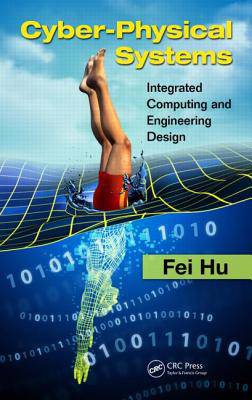
- Afhalen na 1 uur in een winkel met voorraad
- Gratis thuislevering in België vanaf € 30
- Ruim aanbod met 7 miljoen producten
- Afhalen na 1 uur in een winkel met voorraad
- Gratis thuislevering in België vanaf € 30
- Ruim aanbod met 7 miljoen producten
Omschrijving
Cyber-physical systems (CPSs) have quickly become one of the hottest computer applications today. With their tight integration of cyber and physical objects, it is believed CPSs will transform how we interact with the physical world, just like the Internet transformed how we interact with one another. A CPS could be a system at multiple scales, from large smart bridges with fluctuation detection and responding functions, to autonomous cars and tiny implanted medical devices.
Cyber-Physical Systems: Integrated Computing and Engineering Design supplies comprehensive coverage of the principles and design of CPSs. It addresses the many challenges that must be overcome and outlines a roadmap of how to get there.
- Emphasizes the integration of cyber computing and physical objects control
- Covers important CPS theory foundations and models
- Includes interesting case studies of several important civilian and health care applications that illustrate the CPS design process
- Addresses the collaboration of the sensing and controlling of a physical system with robust software architecture
- Explains how to account for random failure events that can occur in a real CPS environment
Presented in a systematic manner, the book begins by discussing the basic concept underlying CPSs and examining some challenging design issues. It then covers the most important design theories and modeling methods for a practical CPS. Next, it moves on to sensor-based CPSs, which use embedded sensors and actuators to interact with the physical world.
The text presents concrete CPS designs for popular civilian applications, including building and energy management. Reflecting the importance of human health care in society, it includes CPS examples of rehabilitation applications such as virtual reality-based disability recovery platforms.
Alleen bij Standaard Boekhandel
Beoordelingen
We publiceren alleen reviews die voldoen aan de voorwaarden voor reviews. Bekijk onze voorwaarden voor reviews.












